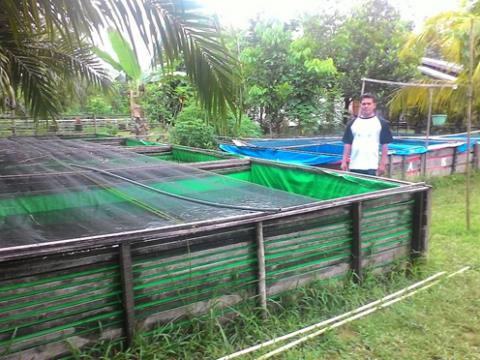Potential of catfish cultivation

Three tarpaulin ponds appear in a neat row between the church building and the clergyman's house in Lingga Dalam Sub Village, Kubu Raya District.
When the sun rises early in the morning, Iswandi, 40, starts to mix the feed for the catfish he cultivates in the ponds. Iswandi is group leader of "Tangket Mas" catfish breeder. Although he busy working as a clergyman, he is active in organising the catfish breeder group.
This story began eight months ago when he started his side job cultivating catfish in tarpaulin ponds. Although he had limited knowledge, he had the courage to make the ponds and raised 1,000 catfish seeds.
"Before I joined the training, many catfish in my ponds died and I didn't know what to do," he says.
But after joining the Wahana Visi Indonesia training about how to cultivate catfish, he has new knowledge.
Together with 12 other group members, Iswandi restarted his catfish cultivation. One of his routine activities is to monitor the acidity of water using a ph meter. By maintaining the water quality, Iswandi and other catfish breeders will allow the catfish to grow better.
Iswandi and the other group members routinely meet to share their experiences and learn from each other. Because of his strong will and perseverance, Iswandi's catfish cultivation started to grow and now he has eight catfish ponds near his house.
"I hope that what I do can inspire the community people here," he explains.
Although at the moment only two people in his neighborhood cultivate catfish, Iswandi is ready to share knowledge and is optimistic that more people will be interested.
"This livelihood has good potential to improve community people's economy, as the price of rubber sap in the area is in decline," he adds.
*Written by Widiyanto Kristiawan, Development Facilitator, Wahana Visi Indonesia at Kubu Raya operational office